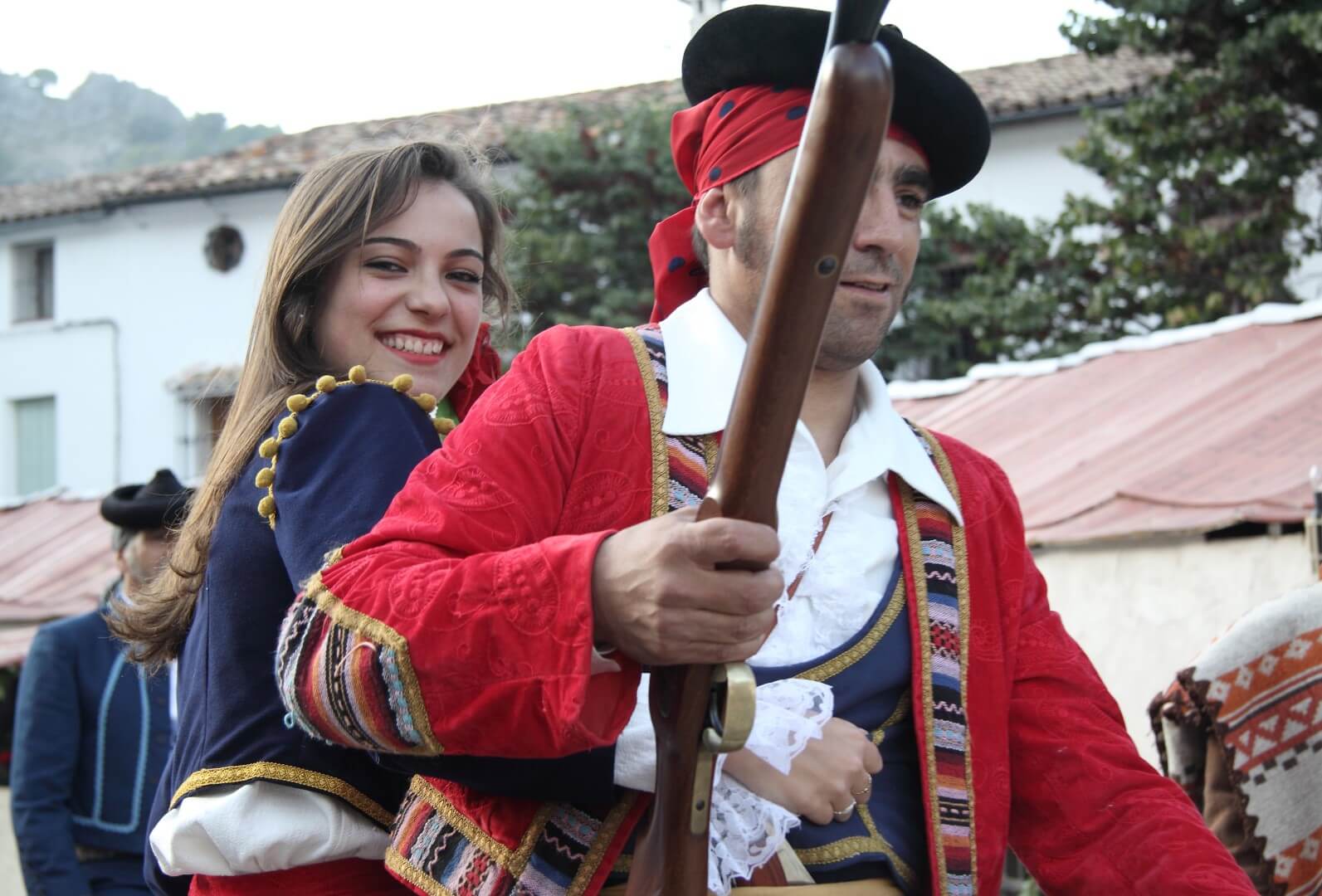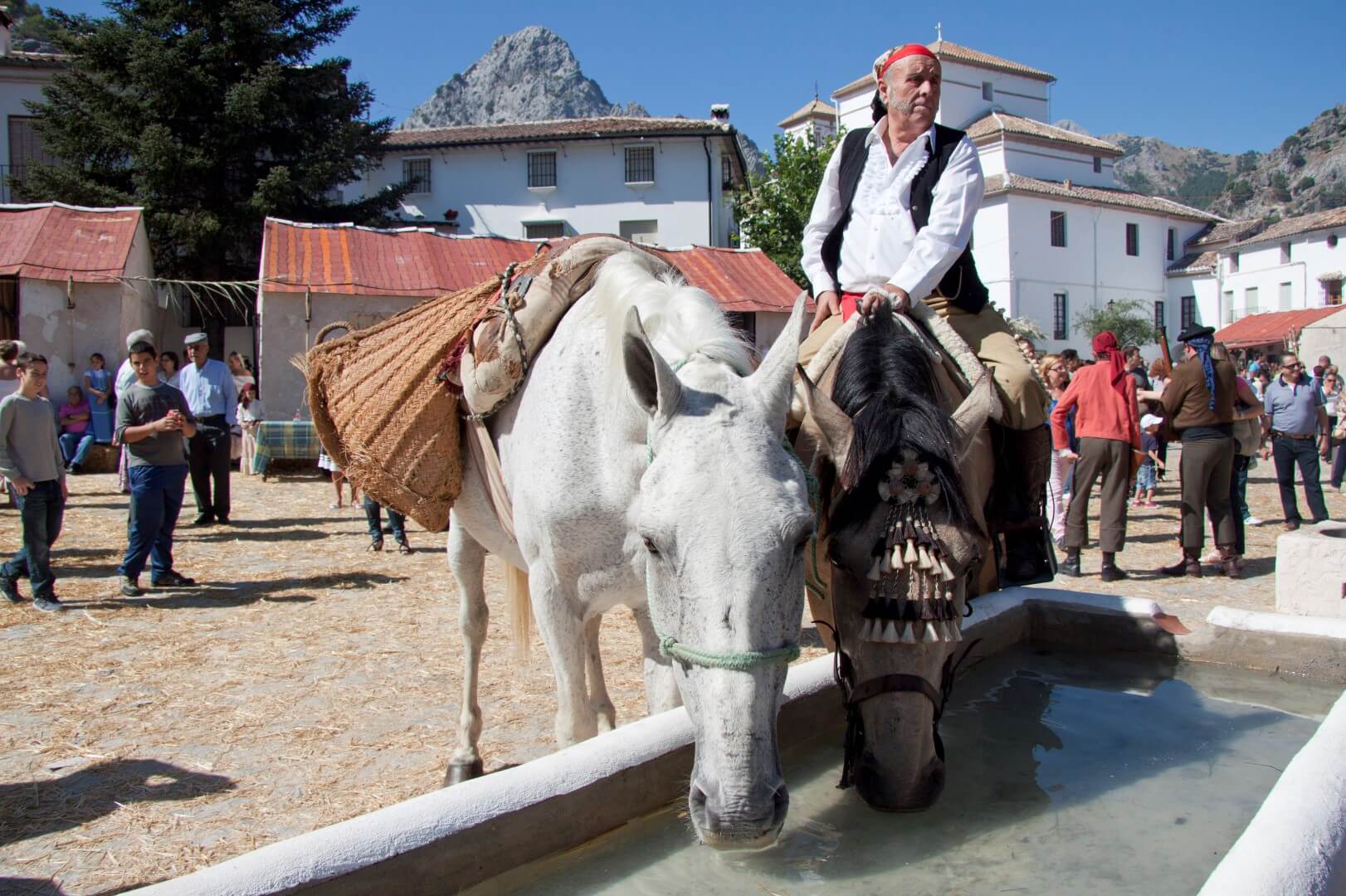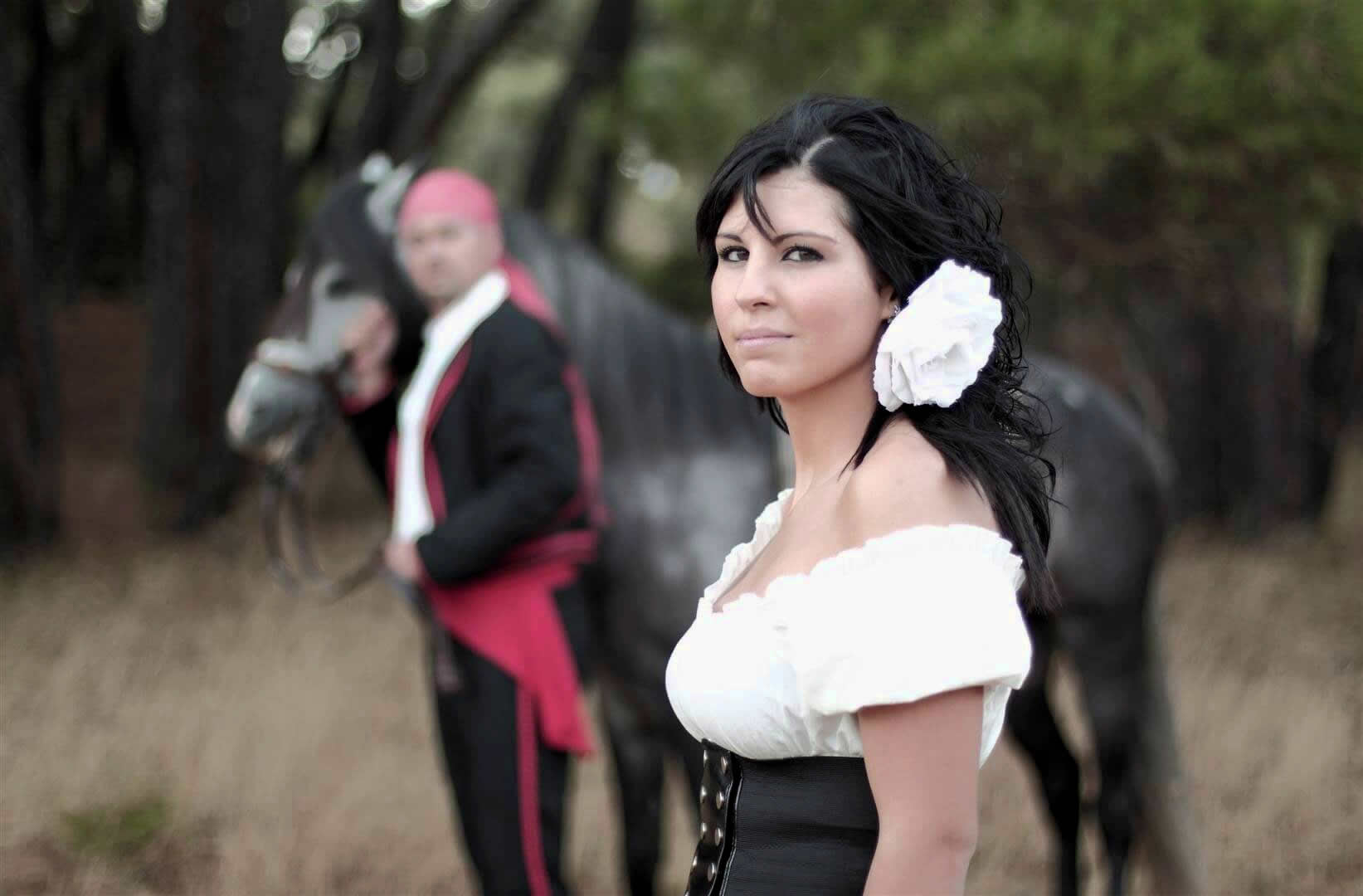3 day
Leisure
THE ROBIN HOOD OF ANDALUSIA

Grazalema reconstructs in autumn the banditry of the Sierra de Cádiz in the 19th century. The locals bring to life the times of José María El Tempranillo. He was small and quick-witted and fled from justice so soon that he was told "you've started early". Thus was born the Robin Hood of Andalusia: José María "El Tempranillo".
His story arouses so much interest that every autumn the people of Grazalema and Benamahoma recreate his life and his tragic love story with María Jerónima Francés, a native of Grazalema. When the evening falls on the first Friday in October and the Sierra de Cádiz rings out with a blunderbuss blast, everyone will know that the fiesta has begun. Theatre, gastronomy and the atmosphere of a whole village, all involved in a fiesta. Every year they invite a town crier of honour.

THE KING OF SIERRA MORENA

OVER ONE HUNDRED villagers become actors for a few days and participate in the weekend in "Sangre y Amor en La Sierra", a reconstruction of the life of "El Tempranillo", that clever and generous boy from Jauja, who was also nicknamed "El Rey de Sierra Morena" (The King of Sierra Morena). In addition to the actors, the whole town wears period costumes and the associations open taverns for charity. Between them, they put on around 40 scenes to show the most important episodes that El Tempranillo experienced in 1832 in the Sierra de Cádiz: his wedding, the death of his wife, and the birth and christening of his son. The fiesta transports you by extension to the atmosphere of the early 19th century. These were the years in which the villagers lived together with thieves, spinners, shepherds, smugglers, corregidores and the odd English writer in search of a more romantic Andalusia.
A town that in time would also become a textile reference point. In 1850, Pascual Madoz says that Grazalema consumed 30,000 arrobas of wool to make blankets, cloths and waistcoats, a thriving industry in the Sierra de Cádiz that filled the village with soap boilers and carding machines.
In the background, the story of a bandit with a charisma, for whom - as in the old West - the captain general of Andalusia offered a reward of six thousand reales de vellón to whoever would deliver Tempranillo - dead or alive - to him.

BANDITS OF GRAZALEMA

The Town Council of Grazalema and the Asociación Cultural Recreación Histórica 'Bandoleros de Grazalema' have been organising the festival for several years and with increasing enthusiasm. Every year new scenes are presented for the first time.
In 2013 as a novelty they reflected how the Swiss botanist, Edmund Boisser, came to the village to study the flora of the Sierra de Cádiz and described for the first time in a scientific work, the Spanish fir, that relic of the Tertiary Era which is today the emblem of the Sierra de Grazalema Natural Park. Among the most recent scenes are also the one dedicated to a rural teacher who talks to the children about the romantic travellers of the 19th century such as Gautier, Mérimée or Richard Ford.
On Friday afternoon, a volley of blunderbusses signals the start of the festival. This is followed by the opening parade. After the proclamation and the opening of the period stalls, "El Tempranillo" arrives with his departure. The stagings will be interspersed with flamenco singing and dancing performances. In the evening, the bandit marries María Jerónima, from the neighbouring town of Torre Alháquime. The festivities continue past midnight.
On Saturday, another volley of blunderbuss shots wakes up the town and the re-enactment continues with the announcement of the birth and subsequent death of El Tempranillo's wife, in the afternoon. The performances continue through the natural scenery and decorations made by the villagers, again until after midnight.
On Sunday, assaults and disputes between the bandits and the migueletes - the soldiers of King Ferdinand VII - are reenacted, and the christening of El Tempranillo's son takes place, culminating in dancing and traditional music until late in the evening when the last lights go out in a village that has become a theatre.


